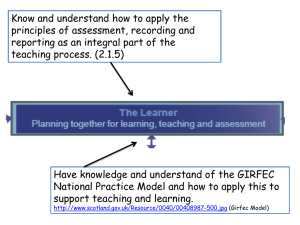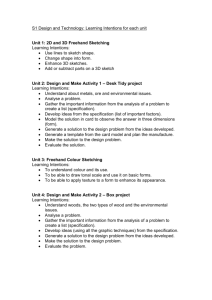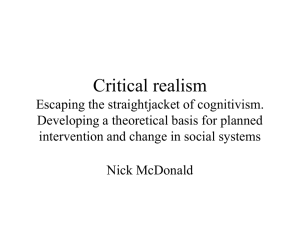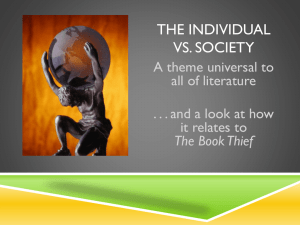File - AndAllThat.co.uk
advertisement
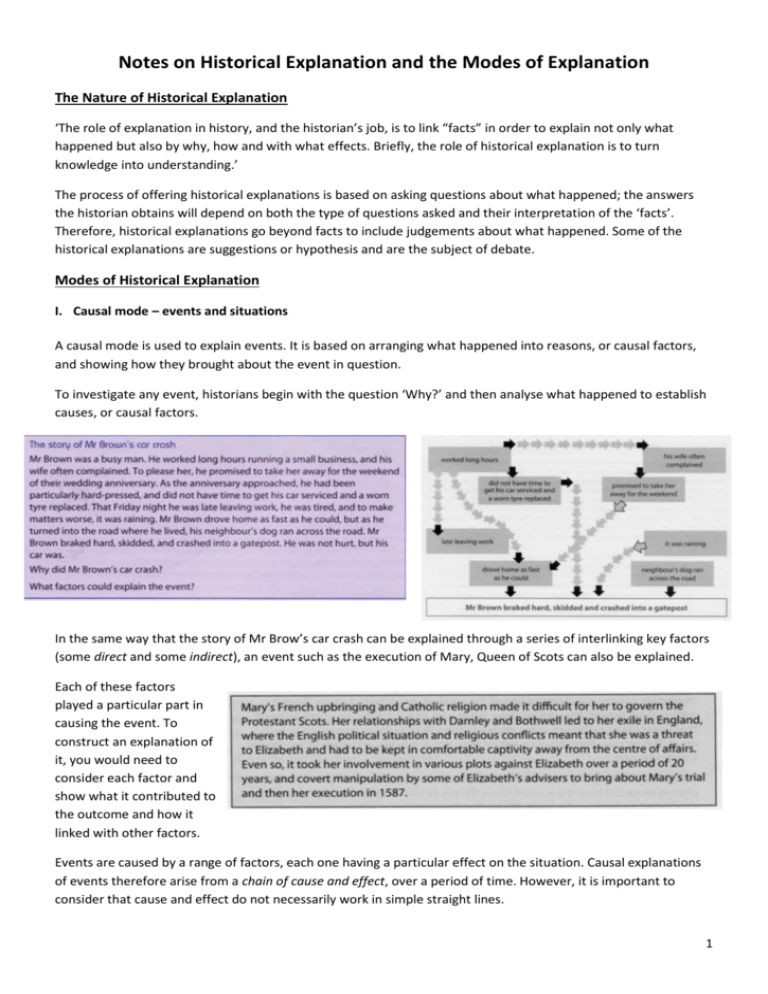
Notes on Historical Explanation and the Modes of Explanation The Nature of Historical Explanation ‘The role of explanation in history, and the historian’s job, is to link “facts” in order to explain not only what happened but also by why, how and with what effects. Briefly, the role of historical explanation is to turn knowledge into understanding.’ The process of offering historical explanations is based on asking questions about what happened; the answers the historian obtains will depend on both the type of questions asked and their interpretation of the ‘facts’. Therefore, historical explanations go beyond facts to include judgements about what happened. Some of the historical explanations are suggestions or hypothesis and are the subject of debate. Modes of Historical Explanation I. Causal mode – events and situations A causal mode is used to explain events. It is based on arranging what happened into reasons, or causal factors, and showing how they brought about the event in question. To investigate any event, historians begin with the question ‘Why?’ and then analyse what happened to establish causes, or causal factors. In the same way that the story of Mr Brow’s car crash can be explained through a series of interlinking key factors (some direct and some indirect), an event such as the execution of Mary, Queen of Scots can also be explained. Each of these factors played a particular part in causing the event. To construct an explanation of it, you would need to consider each factor and show what it contributed to the outcome and how it linked with other factors. Events are caused by a range of factors, each one having a particular effect on the situation. Causal explanations of events therefore arise from a chain of cause and effect, over a period of time. However, it is important to consider that cause and effect do not necessarily work in simple straight lines. 1 II. Intentional mode – the intentions and motives that lie behind actions When using the causal mode of explanation one asks the basic question of ‘Why did this happen?’ This form of explanation is a good starting point but limits the level of understanding that can be achieved. Therefore to understand the situation fully, it is necessary to ask ‘Why did people act in this way?’ This will allow us to explore their motives and intentions as well as their impact. The intentional mode of explanation is a historical method of enquiry used to explain actions by considering intentions and motives that lie behind actions. The process of defining one person’s intentions is not simple and rarely produces certainty. This means that the attempts to explain actions rely on inference and judgment, and this is a major reason why historians’ opinions and explanations can differ. This diagram provides useful questions that can be asked to investigate intentions and explain actions. One of the most famous actions in western European history was the action of Martin Luther in pinning his 95 Theses on the door of the Church of Wittenberg in 1517, thereby sparking a division in the western Christian Church that never healed. Why did Luther take this action? If he did not intend to create a division within the Church, they why did such a division arise from his action? - - - Luther’s stated intention in pinning up these theses was to initiate a debate about the problems facing the Church and in particular about the sale of indulgences. This claim is supported by the fact that they were written in Latin (the language of scholarly debate) and that they did not directly criticise the Church or its leaders. A direct challenge would have been not only brave but foolish, for previous reformers who had challenged the authority of the Church, such as Jan Hus, had been treated as heretics and burned at the stake. As well as direct intentions, historians would need to consider any other ‘hidden’ motives and the influence of his character and experience. He was living in an age when the Church was heavily criticised for its wealth, encouragement of superstition and lax morality. Luther was a man of strong convictions and hasty temper. It is therefore reasonable to suggest that his underlying motives (and therefore reasons why he acted as he did) included anger at the sale of indulgences, disgust a the corruption of leading clerics and convictions about faith that were already distancing him from the mainstream Church. To explain why Luther’s actions lead to its actual outcome – the division of the western Church – we would have to consider a wider range of actions, for example, how the Church responded to Luther, what reactions he created in Germany and how these responses impacted on Luther himself. The intentional mode requires understanding of both actions and reactions, often over a period of time. 2 III. Empathetic explanation – the role of ideas and beliefs The ‘circumstances in which people act’ include events and wider situations, as well as the effect of actions taken by others, but equal importance must be attached to the impact of ideas. The term does not relate to individual feelings and priorities, but rather to the general attitudes and beliefs – a value system – that exists within a particular society or section of it. Ideas play a large part in shaping interaction, for example, between Queen Elizabeth and her councillors. Ideas also influence the way that people respond to events and situations, because they affect the way that we interpret them, how seriously we take them and what we see as remedies. For example, plague epidemics in medieval and early modern Europe were seen by many as a punishment from God. Example 1: To understand the European Reformation, we need to explain the nature of Protestant beliefs and why they were sufficiently appropriate to the time to attract widespread support. This involves: analysing Luther’s ideas about salvation by faith alone and the authority of the Bible to understand their implications relating the ideas to earlier Christian sources and ideas of earlier reformers like Hus and Wycliffe investigating the state of the Church and society to see why the ideas might have a particular appeal at this time exploring how Luther’s ideas were shaped by his conflict with the Church and his need for political support evaluate why his ideas spread so far and so fast considering how the contribution of other reformers like Zwingli and Calvin influenced later developments. Example 2: To understand the role and impact of ideas during the French Revolution, it is necessary to examine the set of ideas which influenced those who took part. There was a significant difference between Louis XVI’s attitudes and beliefs and those of the Third Estate (the commoners, mainly the middle classes). Louis had been brought up and trained for kingship in a system of Divine Right monarch, while members of the Third Estate had been increasingly influenced by ideas of the eighteenth-century Enlightenment. An empathetic explanation would include answers to the following questions: Where did ideas of Divine Right come from? In what ways were ideas about Divine Right appropriate for the time? Why were these ideas widely accepted? What were the main features of the Enlightenment? How did these ideas develop? To explain the nature and influence of ideas, historians are required to: - define the main features of an idea and draw out its implications to explain its nature examine where the idea came from and how it developed consider why it was accepted and appropriate in a particular time and place show how it influenced the nature of situations, the causes and impact of events and the motives and intentions of those who took particular actions. 3 The Interaction between the Modes of Explanation Going back to Mr Brown’s car crash story… The crash involved a combination of ideas, actions and events. The basic problem was Mr Brown’s habitual action of working long hours, which affected his relationship with his wife. He therefore promised her a weekend away, which suggests an intention to please her based on the idea that his marriage was important. When he found himself late once more, this led him into the action of driving fast, which was unfortunate when his long hours had also prevented him from taking care of his car. All this put Mr Brown at risk that night, but it did not make the crash inevitable. Two events that Mr Brown could not control – the rain and the dog in the road – were necessary to cause him to break hard, and this linked with his speed and worn tyre to bring about the crash. It only happened when all the factors combined and interacted at a particular moment. Taking this a step further: It is relatively easy to show that a range of factors plays some part in the process of causation, but evaluating precisely what part is a matter of judgement, relying on interference rather than knowledge. To develop an explanation fully, historians need to analyse the process that they are explaining, evaluate the role and importance of different factors, and synthesise their judgements into an overall conclusion. The basis of all this is their understanding of interaction. Once historians understand how factors interacted, they can make judgements about the part played by any one factor, its relationship to other factors, and its relative importance. The nature of historical explanation is to raise new questions as the explanation is developed. The initial mode of explanation is dictated by the question that is asked. If the historian begins with a question such as ‘Why was there a Bolshevik Revolution in Russia in 1917?’, they are focusing on an event which will require the use of the causal mode. If, however, the question is ‘Why did the Bolsheviks seize power in Russia in 1917?’, the event is being seen as an action, and will require a focus on the actions, motives and intentions of the Bolsheviks. Whichever mode is adopted first, the Bolshevik Revolution cannot be adequately explained without considering the events and situations that made it possible (causal), the actions that brought success (intentional) and the ideas that guided these actions (empathetic). Hence all three modes are required. Example: ‘Why was Charlemagne crowned as emperor in Rome in 800 CE?’ The question can be broken down into these sub-questions: - Why was it possible for the event to take place? Why did it happen at that time? Why did Charlemagne choose to take this title? What did the title signify or symbolise? To answer the first part, we can consider three factors: Charlemagne’s inheritance of a strong Frankish kingdom from his father, Pepin the Short; his own success as ruler of the Franks in conquering Lombard Italy, Bavaria, Saxony and the Danubian Avars; and his alliance to the Church. There three factors created the conditions in which Charlemagne’s coronation could be arranged and managed, and are therefore conditional factors. The event was triggered by quarrels within the Church in 799, which led Pope Leo to flee Rome to Charlemagne’s court for protection. Frankish troops restored him to Rome. This was the contingent factor (subject to chance) that influenced the timing of the event. However, this causal explanation of the event does not explain why Charlemagne wanted to do this. To address this issue we need to consider the event as an action and explain his motives and intentions – but that cannot be done without understanding the significance of the title and the attitudes and beliefs to which it was linked. The Roman Empire represented a golden age of peace and security, to which medieval rulers and their subjects 4 looked back with respect and longing. It also represented Christianity as the religion of the later empire that allowed the popes in Rome to claim both temporal and spiritual power as the heirs of the emperors, challenging the claims made by the eastern, Byzantine emperors to authority over the west. Therefore, by accepting the title of emperor Charlemagne was seen by some as the status of a Roman emperor and a leader of Christianity, as well as setting limits to Byzantine power. This empathetic explanation now allows us to understand his action – his intentions were to consolidate his own power and define the role of his allies in the Church. A summary of the stages to follow: 1. Begin with what needs to be explained – an event or situation, an action or an ‘idea’. 2. Plan your explanation in outline according to the appropriate mode. As you do this, look for the subquestions that can develop the explanation, such as (a) what conditions made it possible, (b) what actions contributed to it, and (c) what beliefs and attitudes encouraged or influenced the outcome? The subquestions can set the shape and order of your arguments, and highlight the role of different factors within the overall explanation. 3. Work through the sub-questions to build your explanation, and summarise your conclusions with explicit reference to the role of different factors within an overall explanation. This will include explanation of how they interlinked. Exam Tips o o o o o o When faced with a question analyse it carefully in order to define the focus. Ensure that you answer the question rather than simply write about the topic. Plan before you write. You may find it useful to produce a table to list particular actions/intentions, ideas/beliefs and context/events. In your introduction begin by defining the issues posed by the question. This will help define the focus of your essay and make the question more manageable. Avoid writing extensive narrative or descriptive passages. Information is included to support different arguments and demonstrate their accuracy. Information must not be included for its own sake, but only if it is directly relevant to answering the actual question. Your explanations should include evidence to support the existence of different factors, the role that they played, and the ways in which they combined and interacted to bring about the outcome that you are trying to explain. To develop your explanation further, evaluate it by explaining the role and relative importance of different factors in the overall process. 5

